How to Stand Up on Your SUP
Learning how to stand up on your SUP is easier than it looks. All you need to do is follow a few simple guidelines and you'll be standing in no time. This article digs into those fundamentals and provides a thorough process to follow. On top of those fundamentals you'll pick up several key insights that will help with other aspects of your paddle boarding, like your stance and stroke. Let's get started!

Remember to wear your leash when paddling.
Before You Stand Up: Location
Before we get into the specifics of what to do on your board it's best to start with one of the most important considerations when paddle boarding: location. Choosing your location wisely can make your first attempt to stand up easy. If you're just getting the hang of things, try to find somewhere with calm water (no current) and little to no wind, like a sheltered bay or small lake. Of course, be sure to check your local forecast and water conditions. Another thing to consider about location is what lies beneath. In addition to protecting yourself from the elements you'll want to consider what you're practicing above. You might fall off (which can actually be a lot of fun), so make sure if you do it's not on top of anything that might cause injury, like rocks, reefs, or any other submerged obstacles. This gives you the peace of mind to focus on what you're practicing without having to worry about if you might get hurt falling off.
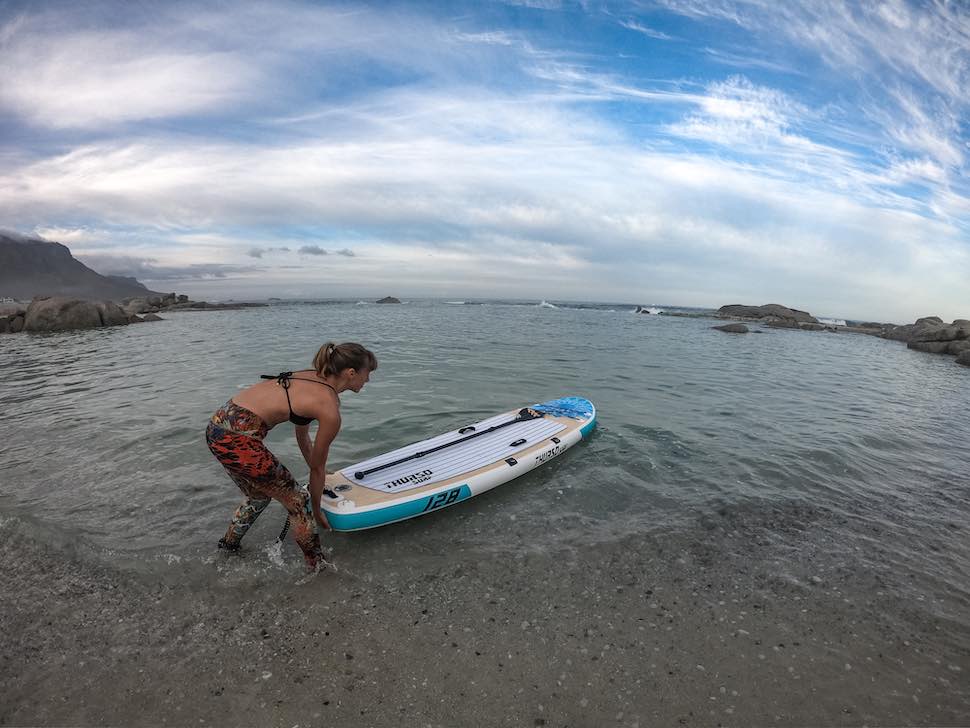
Walk your board out into knee deep water before getting on.
Before You Stand Up: Entering the Water
Now that you've checked the conditions (wind, waves, and current) and are heading to the water, it's time to consider how to get on your SUP. Always make sure you have enough clearance beneath you so you don't damage your fins. A good rule of thumb to follow is to first walk your board out into the water. Then, once the water is up to your knees, get on your board. This way you know you have more than enough clearance between your fins and the bottom, even after the added weight of getting on-board.

Falling off is part of the fun!
How to Stand Up: Getting On and Kneeling
Step 1: Put Your Paddle on Board
With your board in the water and enough clearance for your fins, you can now get on-board. To get on your SUP, place your paddle perpendicular to the board just in front of the carry handle. Laying your paddle across your board perpendicularly keeps it out of your way and creates less of a chance of it sliding off the side.
Step 2: Place Your Hands
Now, with the paddle resting perpendicularly across the board just in front of the carry handle, place both hands over the paddle shaft. Your hands should be placed over the shaft roughly shoulder length apart.
Step 3: Bring Knees to Board
With your hands resting over the paddle shaft roughly shoulder length apart, place one knee on the far side of the board and then the other on the near side of the carry handle. Similar to when you're getting on your bike. Once both knees are on, you can sit back in a kneeling position. Since your hands are already on the shaft of your paddle, you'll be able to sit back with your paddle already conveniently in hand.
BEGINNER BONUS: If it's your first time, I highly recommended that you spend some time paddling from your knees. This simply helps you get comfortable with your board and paddle stroke before standing. However, knee paddling also has several other uses and benefits for beginner and experienced SUPers alike. So, if you're looking for more details on this technique, check out "How to Paddle Board on Your Knees" for a complete rundown and additional insights.

Get into a kneeling position before standing up.
How to Stand Up: From Kneeling to Standing
So far, so good. You checked your local conditions and decided on a location. You launched your board in a safe area on that body of water, with enough clearance for your fins. And now you're comfortably resting in a kneeling position, paddle in hand, on your SUP. So how do you stand up on your SUP? You're almost there!
Step 1: Position Yourself
To stand up on your board from your knees, place the paddle in front of you so it's laying perpendicular. Just like you were positioned for 'Step 3′ above. Now, with both hands over the shaft of the paddle, look toward the horizon in front of you and lean forward lifting your butt up off your feet. Similar to getting ready to crawl on your hands and knees.
Step 2: Crawl to Squat
Now that you're in a sturdy position on your hands and knees you can stand up. Yes, it's finally time! With your hands still resting on your paddle in front of you bring each knee up to your chest, so you're in a squatting position. Bring each knee to your chest one at a time in a smooth motion so you're resting on the balls of your feet in squatting position. Try to keep your feet flat as this will help you keep your board stable.

Once you're standing you can use you paddle to increase your stability.
Step 3: From Squatting to Standing
Now from a squatting position with both feet flat on the board shoulder width apart, push yourself up as though you are doing a squat or lifting a heavy box. Keep your back straight as you rise up and be sure to keep your feet flat. You may naturally want to get up on the balls of our feet in a ready position, but you'll get more stability on a SUP by keeping your feet flat on the board in contact with the surface. Once you're fully standing, keep your knees soft and dip your paddle into the water. Your paddle and stroke can provide you extra stability similar to the balance you get from the momentum of peddling when riding a bike.
CONGRATULATIONS…You're standing! But we're not through yet. You may be up on your feet now, but you'll want to make sure you're in the perfect position on your board. Don't worry it's quite easy to figure out.
Step 4: Trimming Your Board
You could easily start paddling now, but we're here to get you in tip top shape so you'll want to consider this last step. Since all boards and riders are different, your exact position on the board will vary. You don't want too much of either the nose or tail sticking out of the water. That's an indication that you're too far forward or too far back. You want to find your sweet spot so the length of the board is in contact with the surface of the water.

Too much weight at one ends means you need to trim.
To find it, first have a look at your nose and tail once you're standing. Is one or the other noticeably out of the water? If so, then you'll want to adjust. To make moving up and down your board easier, plant your paddle on your board in front of you. Having the paddle planted on the board in front of you lets you use it to maintain your balance, similar to using a hand rail or cane. Simply place both hands on the shaft and plant the blade of the paddle, tip down, on your board in front of you. Now you can shuffle your feet one at at time forward and backwards easily. If your nose is too far out of the water you need to move forward. If your tail is out of the water then you need to move backwards. Take note of where your feet are on the board for next time. Thurso Surf SUPs have patterned deck pads that transition from front to back so with a bit of practice you can feel with your feet where you're standing on the board without looking down.
Now You Know How to Stand Up
As you can see standing up isn't that difficult, but there are technique syou can use to your advantage. Simply getting on board and up on your feet is one thing, but knowing how and why you position yourself increases your insight and understanding of the sport. This in turn can transfer to other skills and techniques you develop over time. All of that improvement adds up to more fun on the water! So get out there, keep practicing, and be sure to enjoy yourself while you're doing it.


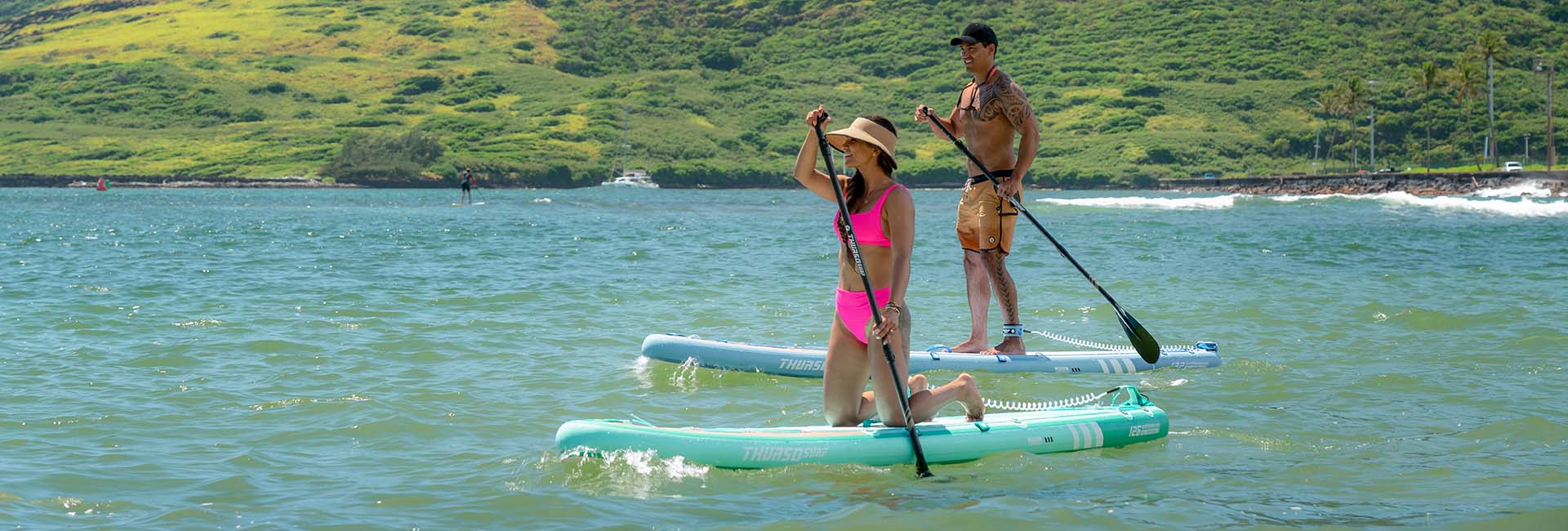
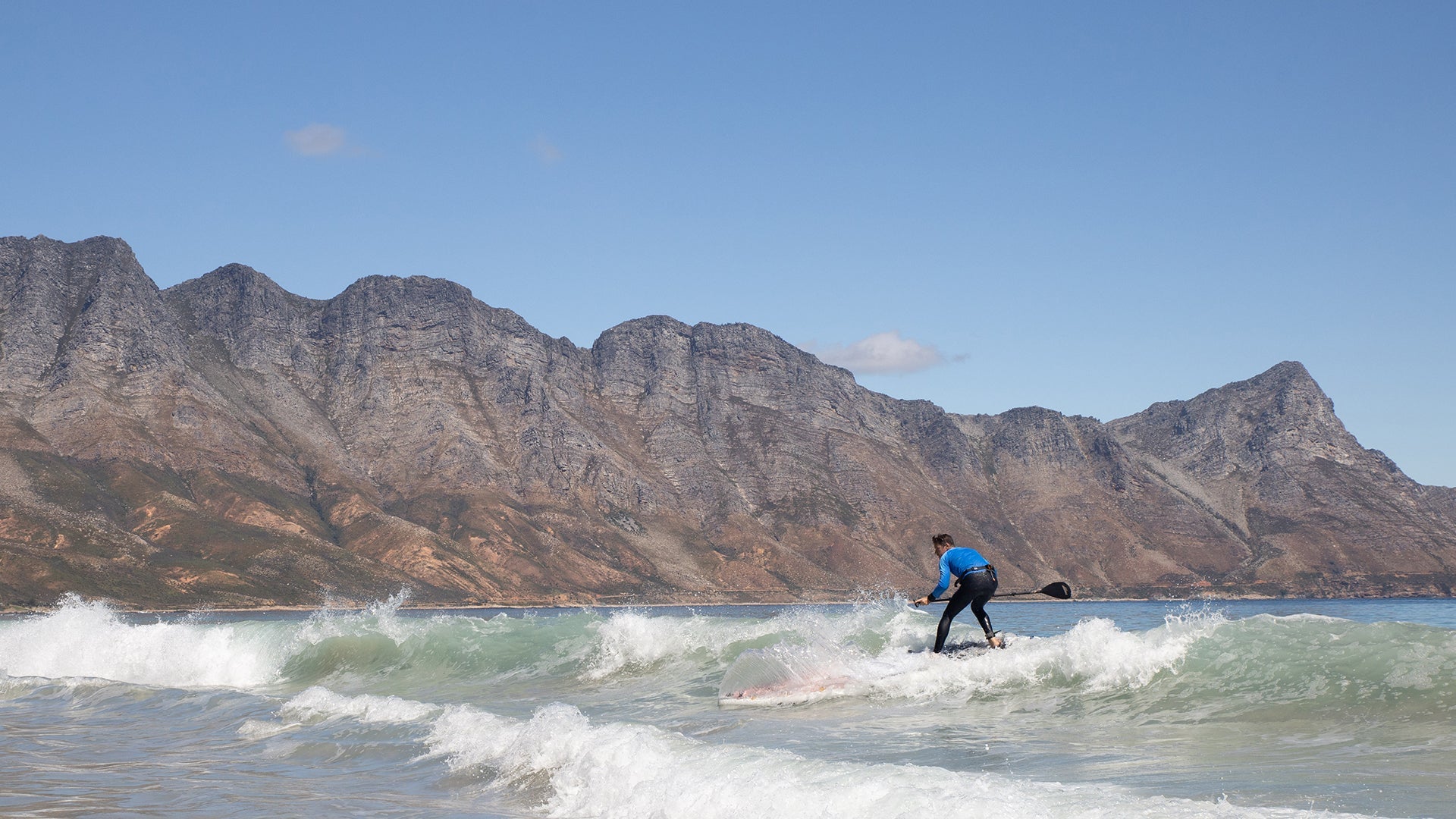
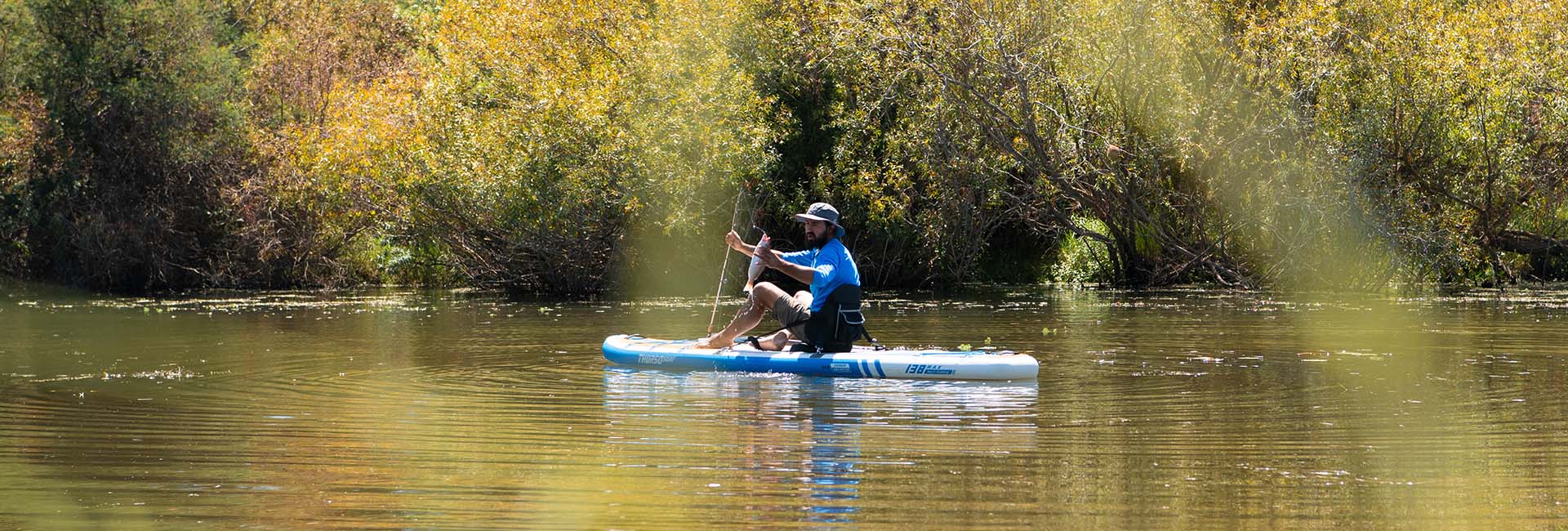
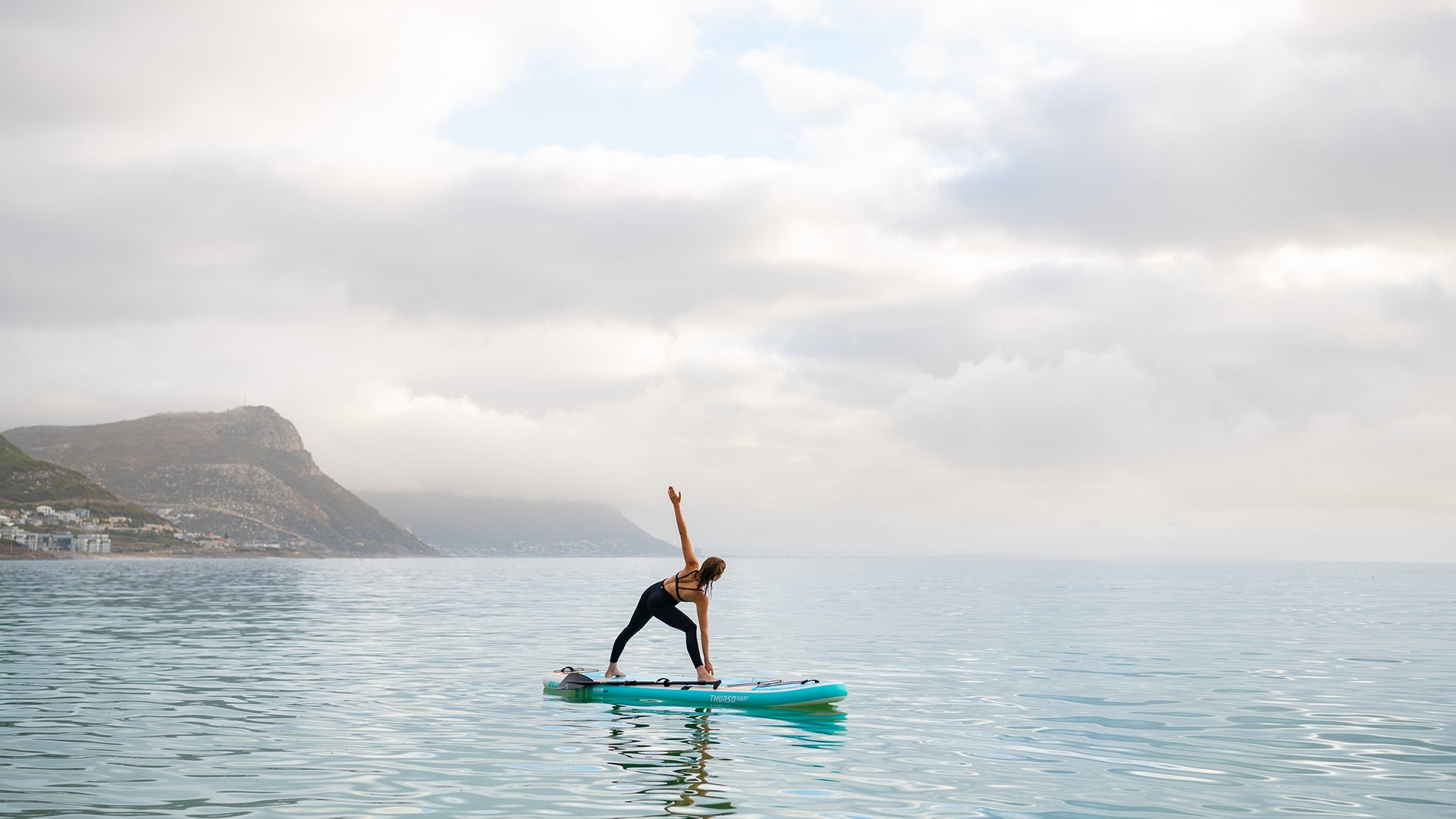
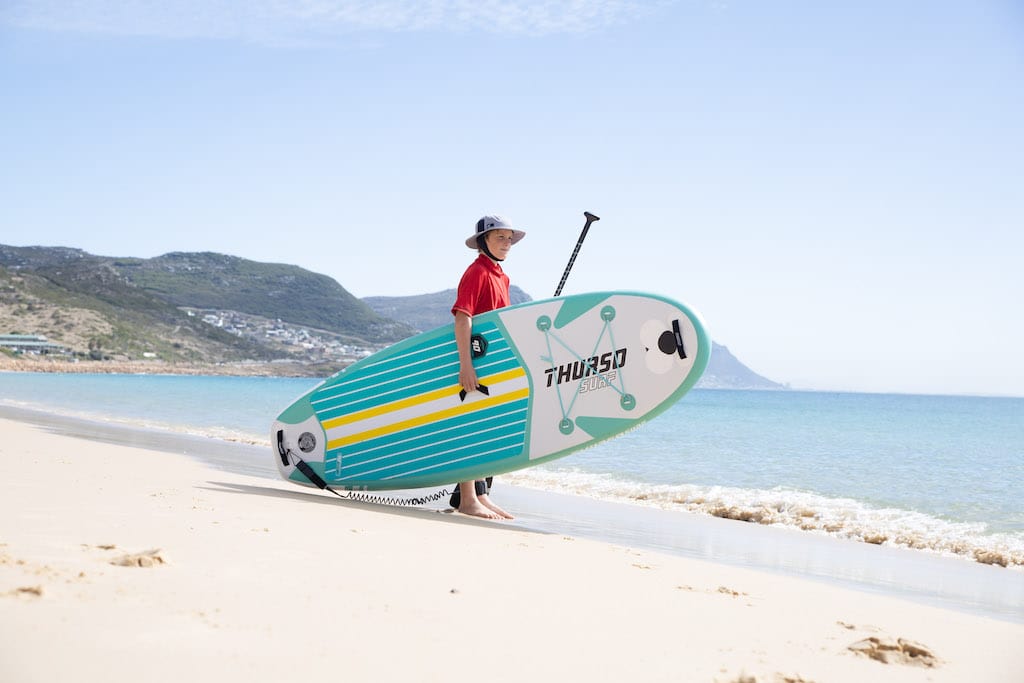
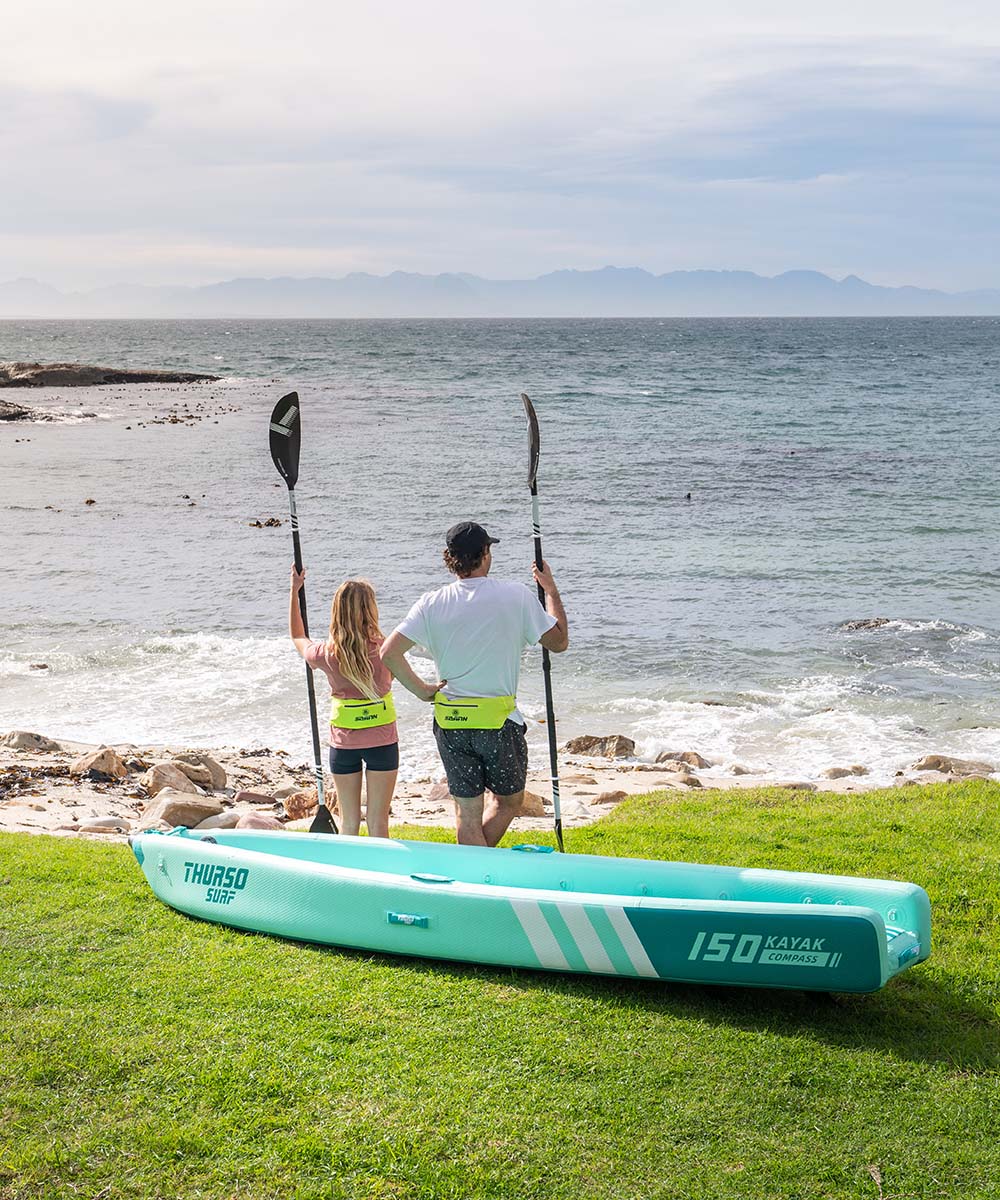
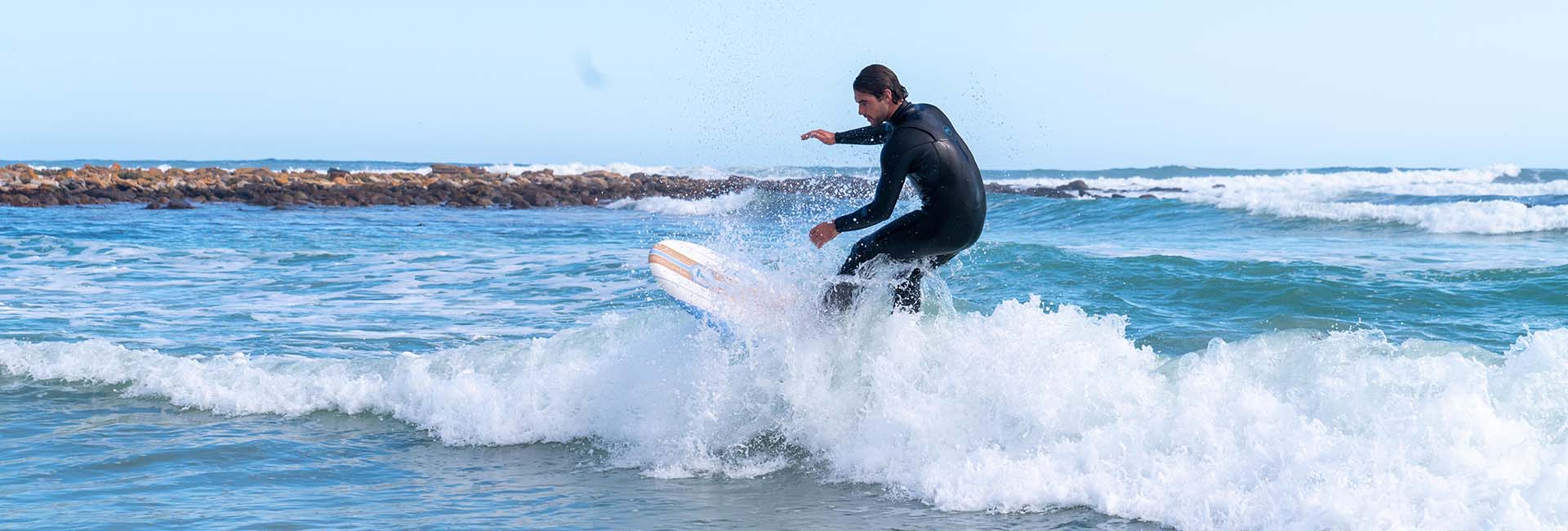
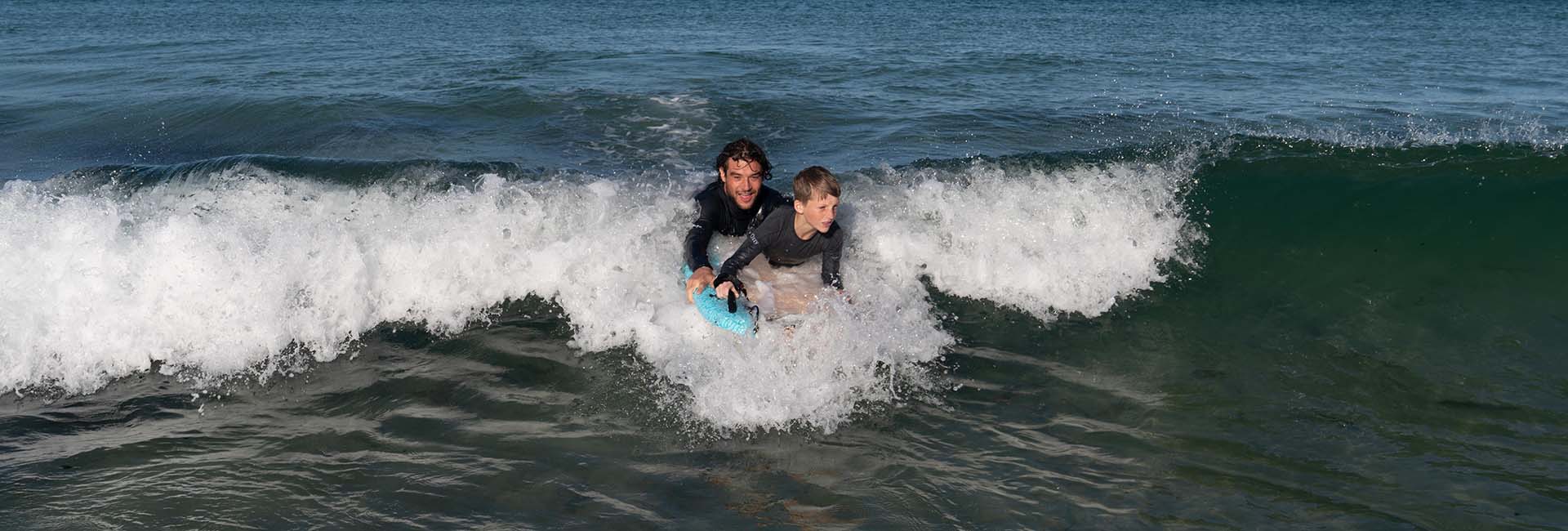
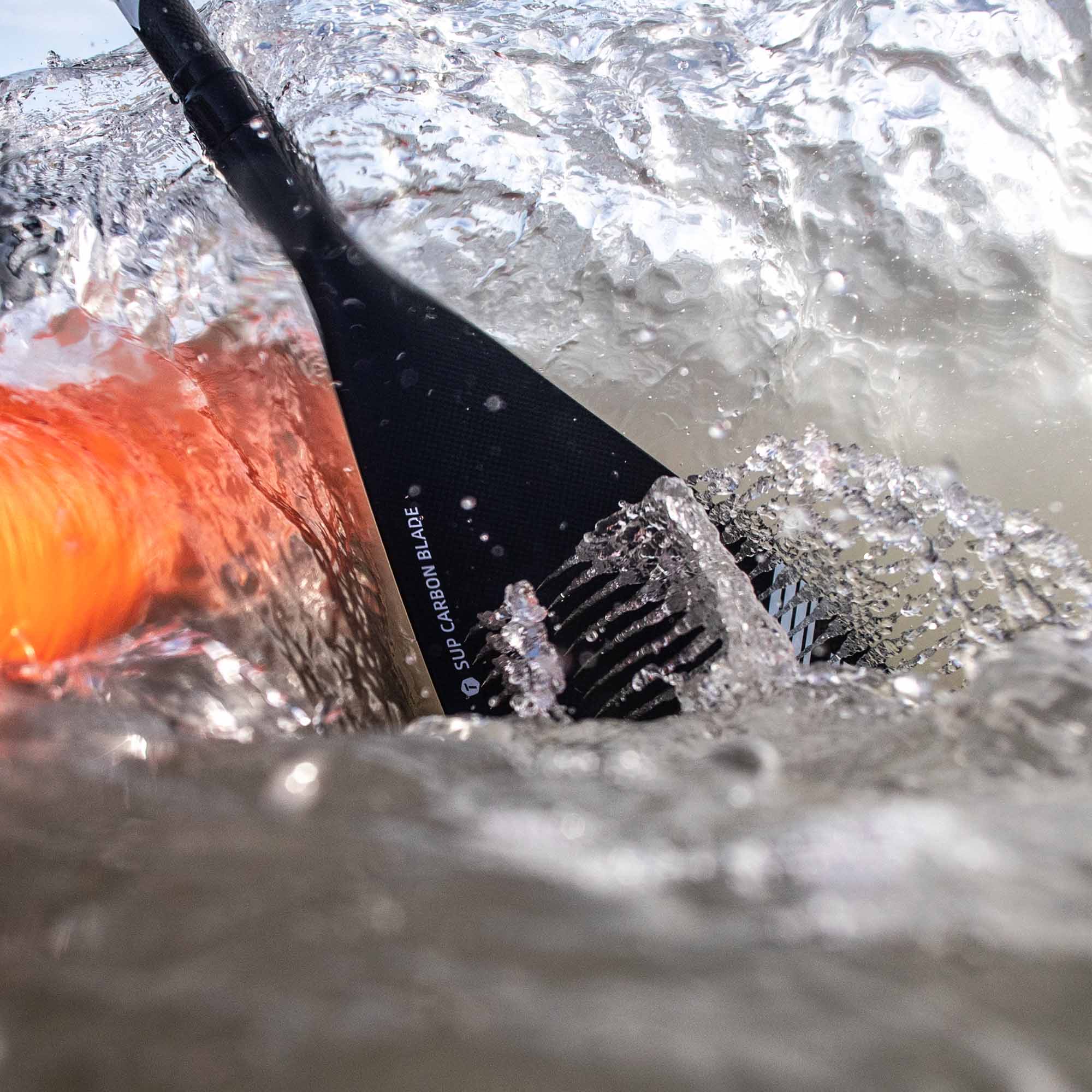
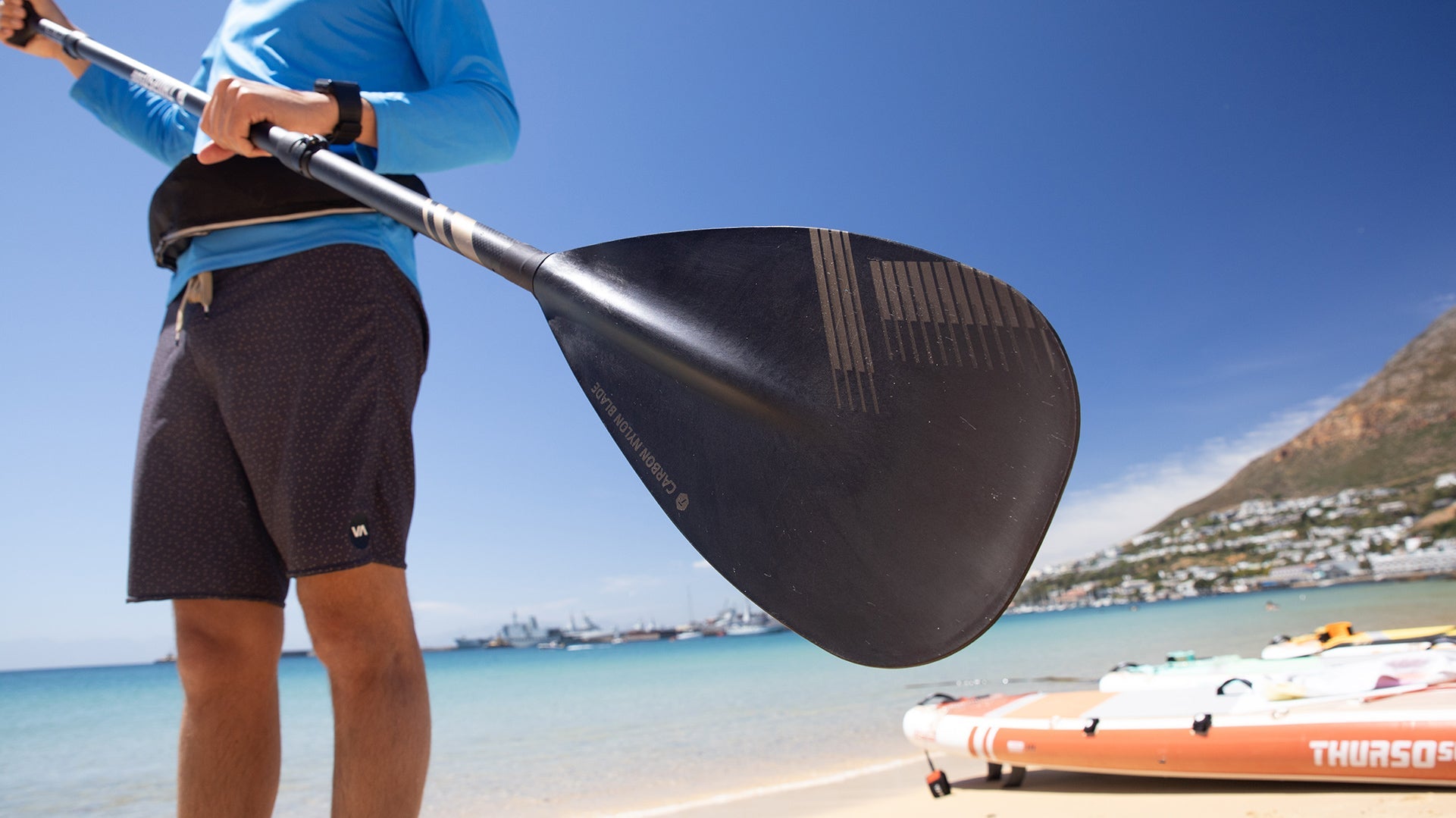
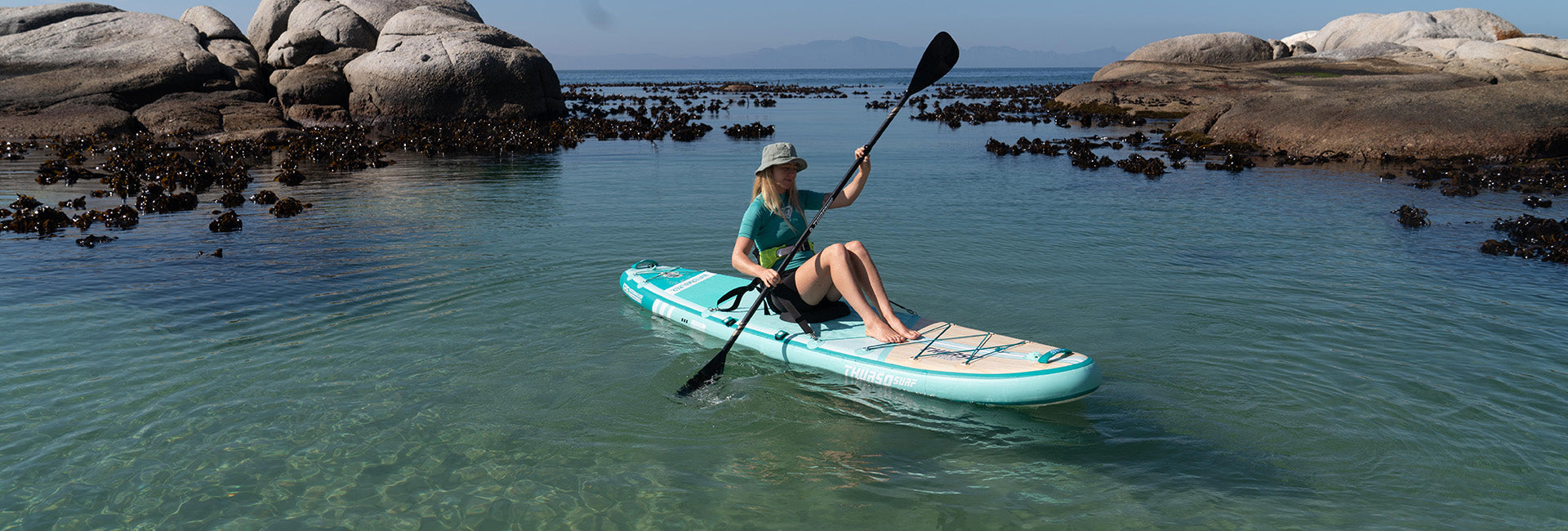

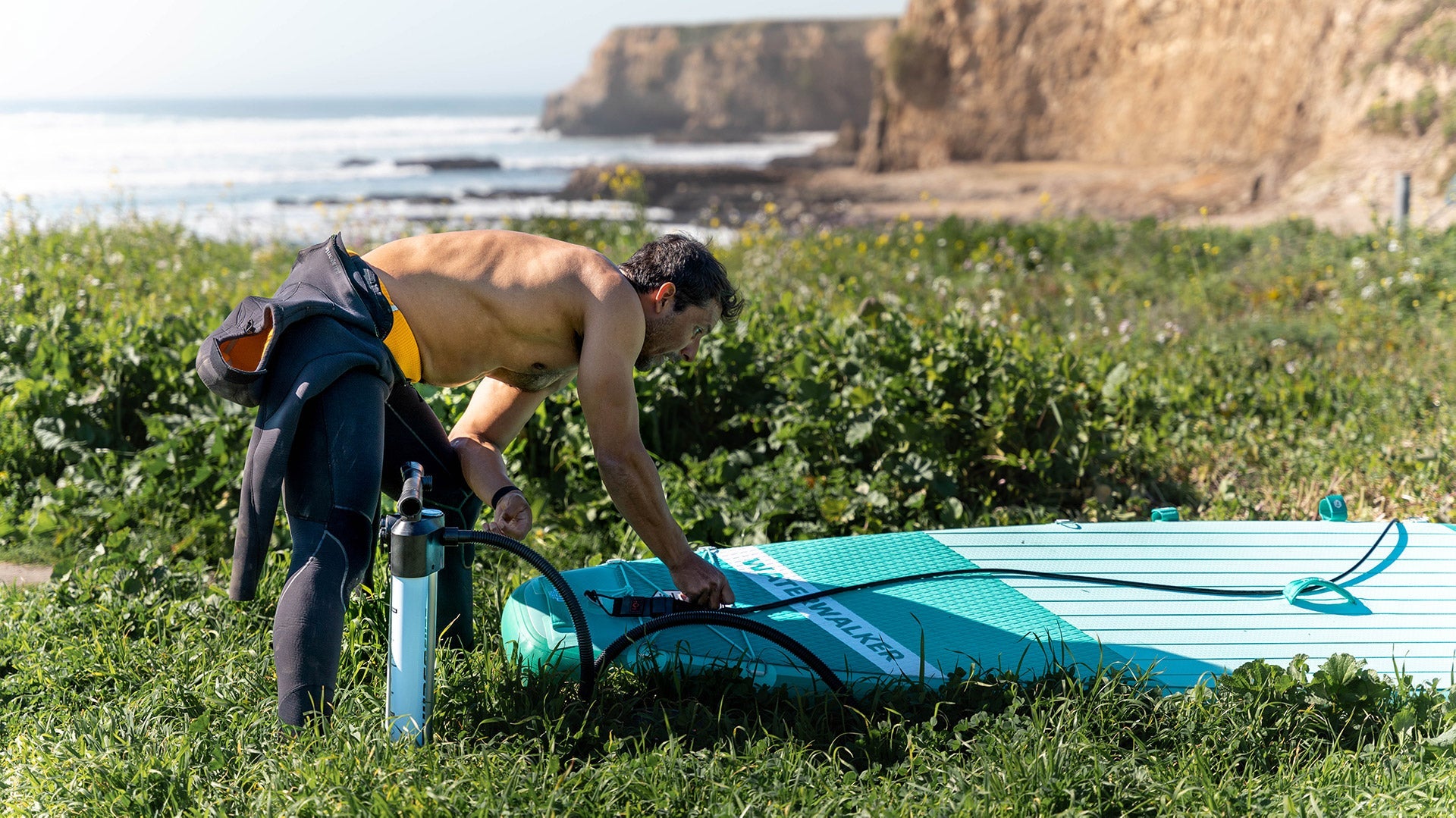
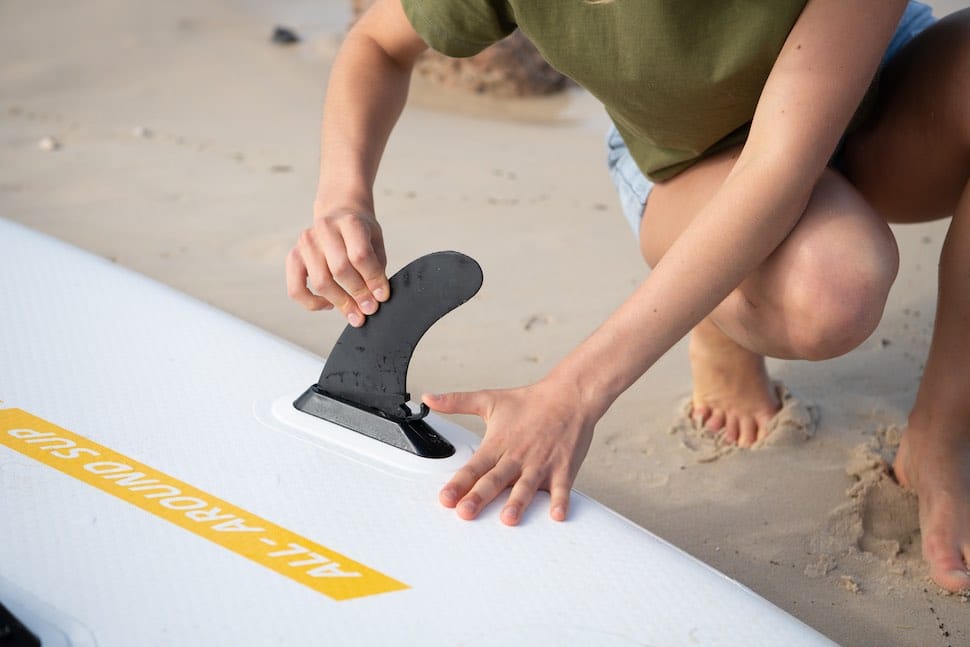
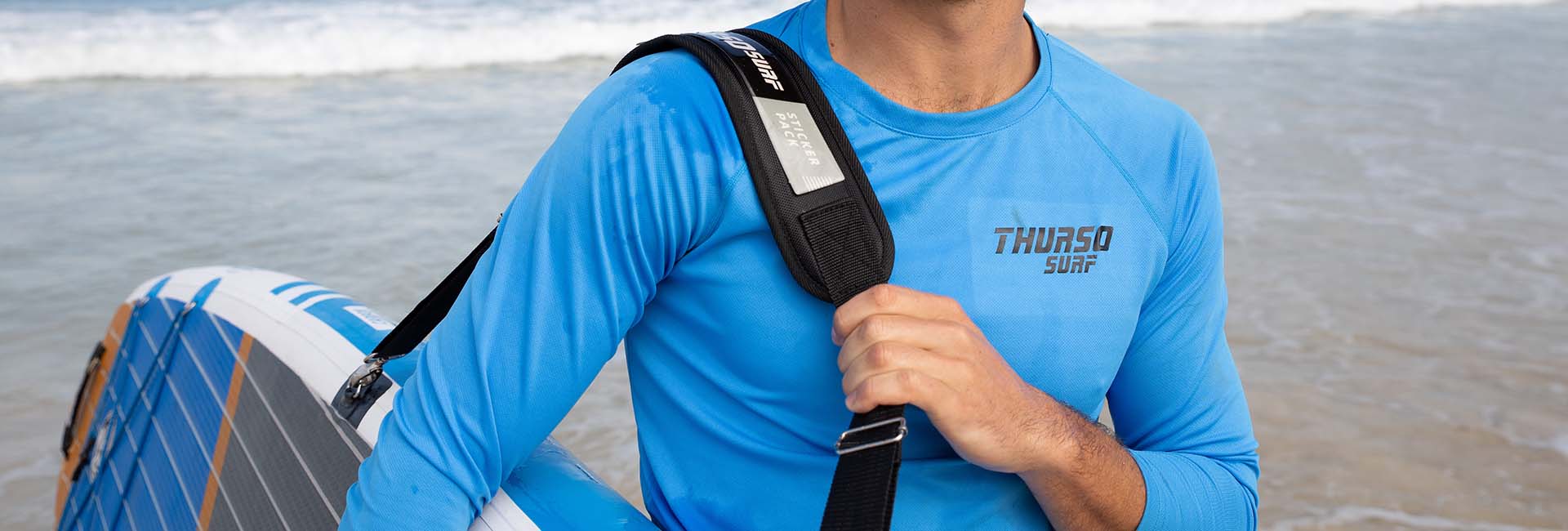



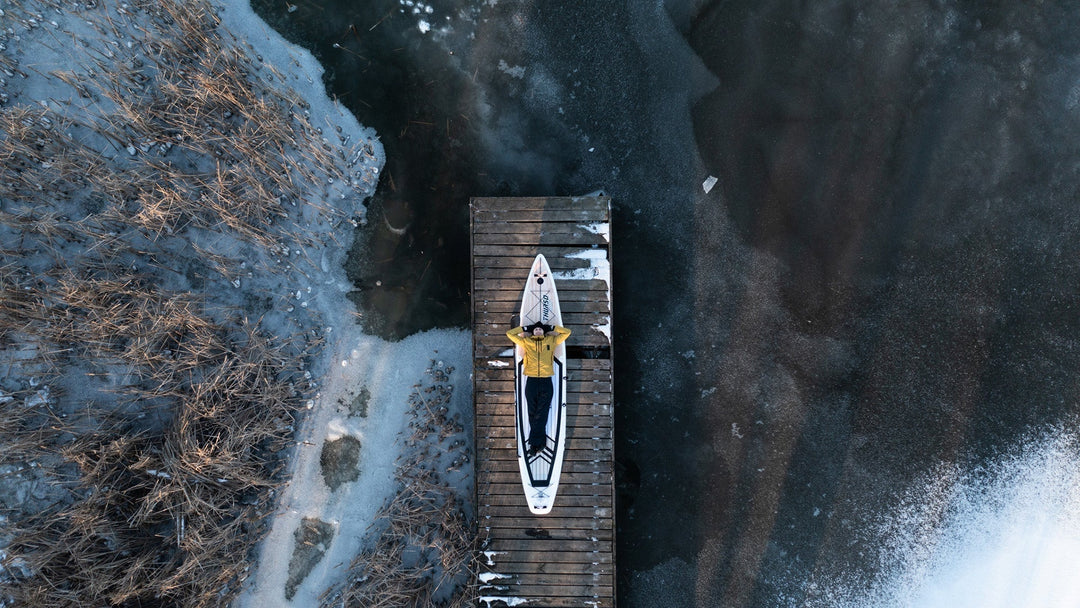
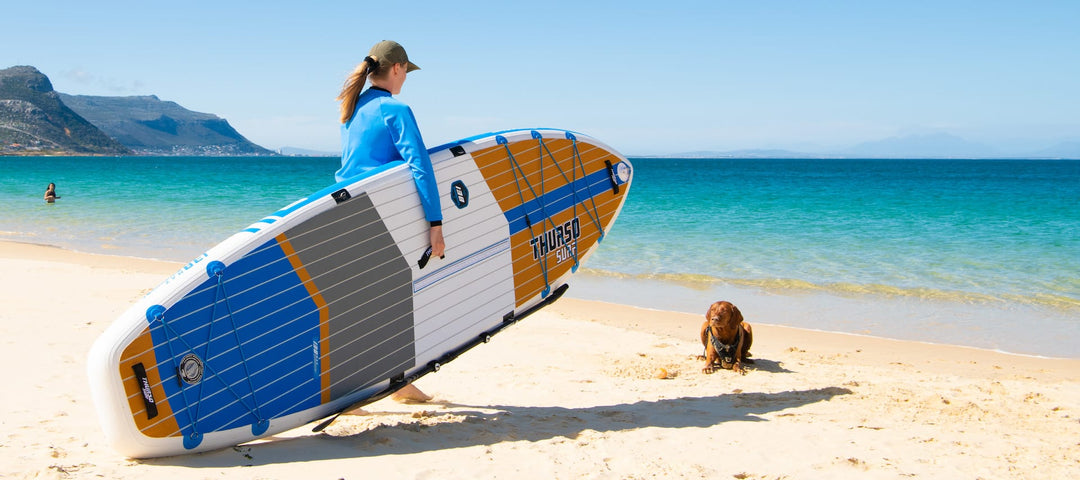
Once you try it, it’s easy to get hooked! Stoked to hear you’re having a blast out there!
Thank you for these tips! I can’t wait to try this all out! I’ve been exploring different outdoor activities lately and paddle boarding is a new favorite of mine. It’s both mentally and physically addictive. Here’s why everyone should consider doing Stand up paddle boarding:
https://3dfins.com.au/blogs/media-spotlight/the-rising-popularity-of-stand-up-paddleboarding
Leave a comment